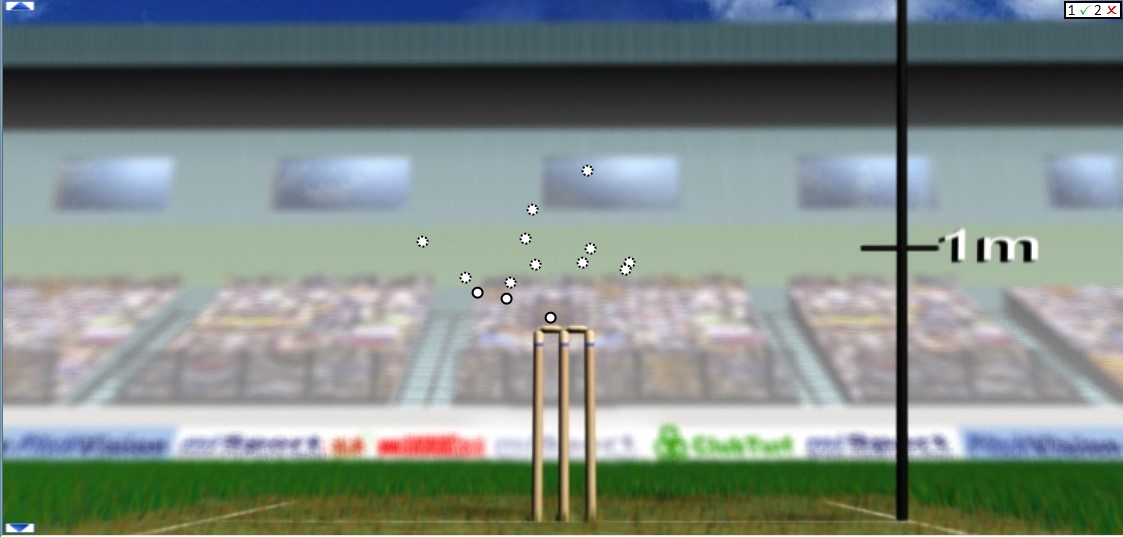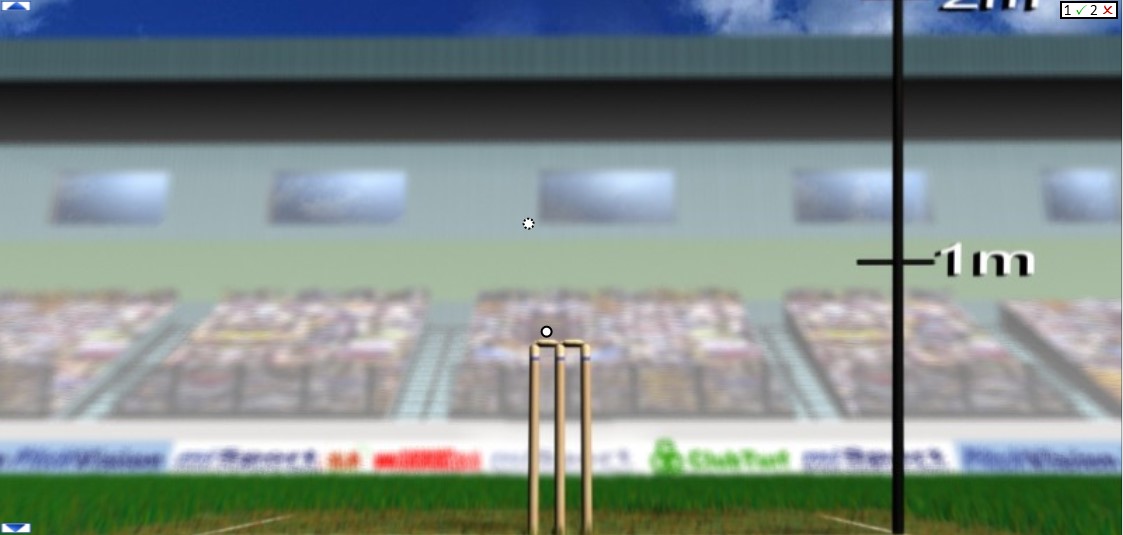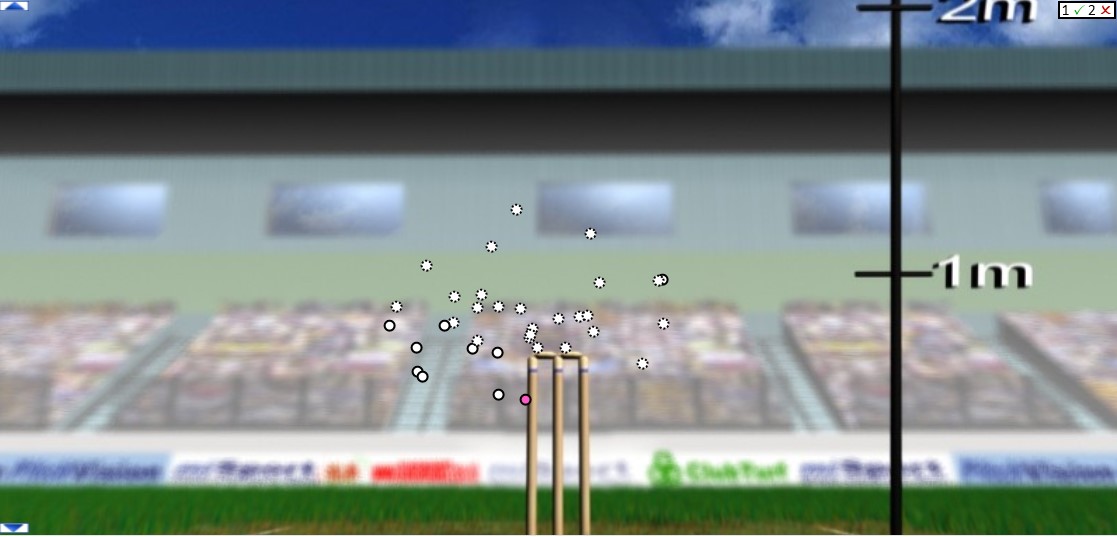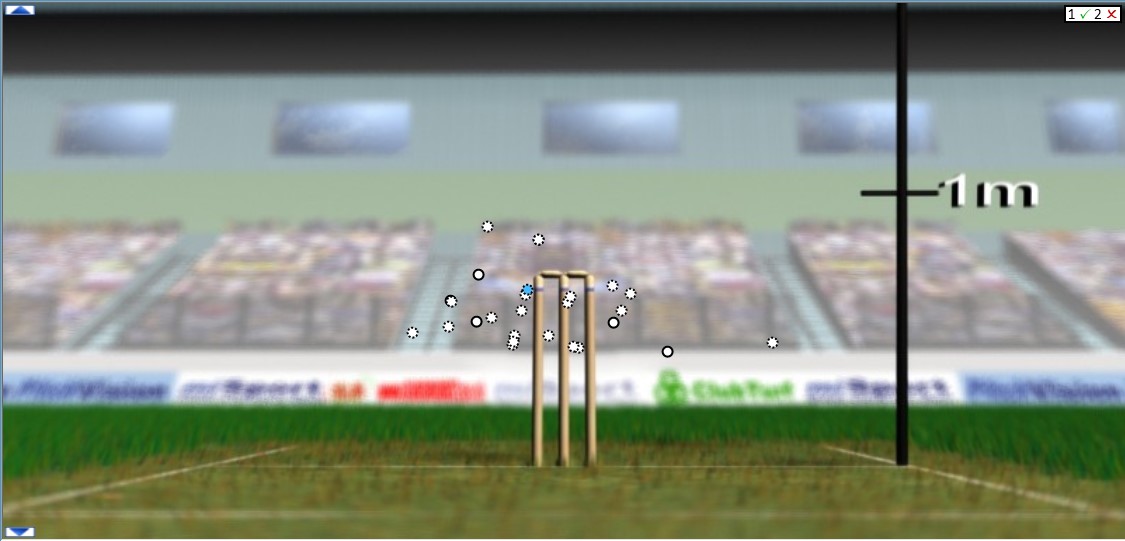Case Study: Scoring More Runs by Breaking Down Bowling Length Tactics
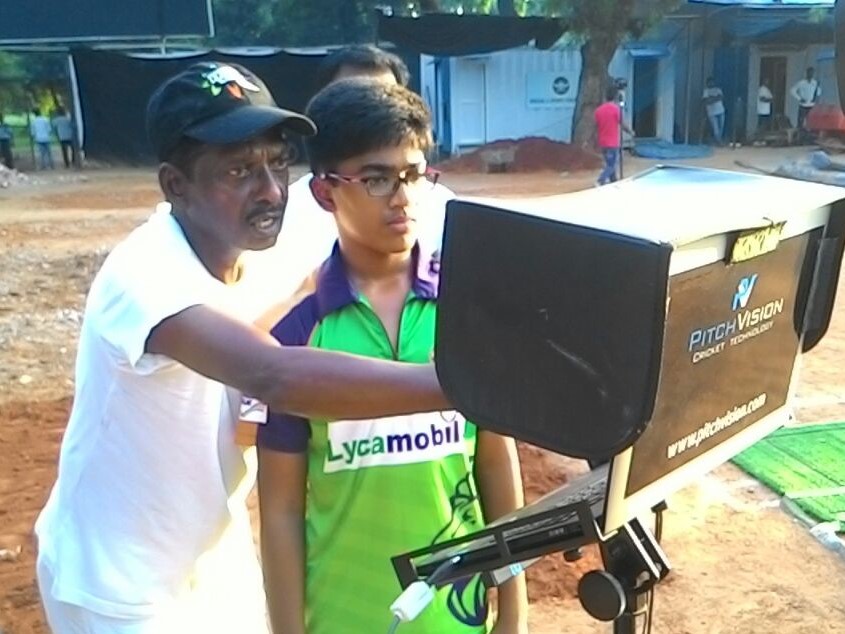 How do you improve your batting?
How do you improve your batting?
One simple way is through the tools provided by PitchVision's PV/ONE system. With them, you can look at how you play against different types of delivery, and work out how you do in very specific areas.
Let's pick an example.
Analyst Waqas Zafar recently did this for a club level batsman facing seam bowling. PitchVision allowed him to break down the batsman's performance against different lengths of delivery and different heights of bounce. So, quickly we can see the batsman faced 77 deliveries at an average pace has been 65.40mph (105.25kph).
What did he find?
Facing short bowling
The bowlers were short 14 times (18% of the balls that have been bowled). These bowlers have usually set up targets on the good length and are keen to hit those areas instead of banging it short. Here is a look at the beehive placement of the short pitched deliveries.
It's generally accepted that batsmen should look to score whenever the bowler straightens lines or offers width. And you can see here that none of the deliveries are attacking the stumps, so the batsman could have attacked any of these balls with pulls or cuts.
This is true even with variable bounce.
One of the balls ended up just being on top of middle and off stump. Though it pitched on 7.6m from the stumps it ended up missing the stumps by a small margin. The same seamer pitched the ball on 7.7m but it ended up bouncing above 1.0m mark!
Here is a look at the two balls with variable bounce.
So, if the batsman can get confident in cross bat shots, especially adjusting for variable bounce, it's clear that the "shooter" is not a major concern.
Dealing with good bowling
36 times (46.77%) the bowlers hit 7.0–5.0m range (good length for club cricket) and have generally kept the ball outside off.
10 times they have found deviation though one of the balls was sliding well down the leg side.
The balls which have deviated outside off stump are more around the stump height which will encourage front foot play more often than not and it is a good sign for the bowlers.
So we can see the batter can look to score when the bowler strays on his pads as most balls are not attacking the stumps. We can see from this length that only one ball is hitting the off stump (the wicket ball) with average bounce being 0.81m. This carries away the threat of LBW or bowled. The batter can pick off runs and put pressure on the bowler.
A look at the beehive placement of the balls:
Attacking fuller balls
27 times (35.07%) the bowlers over-pitched the ball. The average deviation from this length has been 0.1 degrees which isn’t enough to cause any worries for the batsman. Average bounce from this length is lower at 0.58m, which attacks the sumps but also makes driving much easier and it is more manageable to put the ball away.
Here is a look at the fuller balls.
The blue ball in the beehive placement shows a boundary ball. This ball pitched on the 4.7 m mark but we can see a lot of dot balls below the blue mark which were even fuller than 4.7.
This shows that the batter has to work more on his consistency of putting away long half volleys in line with the stumps and outside off stump.
Based on this analysis, the batsman can work on,
- Cross-bat shots when the bowler pitches it short. The bounce has been high enough to cut or pull.
- Picking off straighter good length balls that stray down the leg side.
- Develop confidence in attacking fuller balls.
The role of PV/ONE
Before PV/ONE this analysis was perfectly possible to achieve. However, it required both a highly skilled coach and a lot of time consuming video editing. Imagine filming a session then watching the whole thing back and trying to pick out the balls that are over pitched, that bounce higher or that deviate. It would take ages!
Instead, PV/ONE does all that tagging anc catagorising as it goes. This allows coaches with less time and experience to get the same analysis results as we have seen here with an expert analyst like Waqas.
On top of that, all the videos and information are logged and saved in the cloud for analysis anywhere in the world and from anyone; parents, rep level coaches and any other trusted adviser. That's how Waqas in Pakistan can review the skills of a cricketer in the UK!
Cricket South Africa have chosen to roll out 20 PV/ONE systems across South Africa for these reasons. The systems will be used to track video and data and hunt out talented cricketers who can be fast-tracked more effectively that ever before.
For more details on PV/ONE in cricket coaching for every level, contact PitchVision:
- Neil Fairbairn (United Kingdom, Europe, U.A.E.) +44 (0) 781 364 9054
- Craig Van Dyk (South Africa) +27 (83) 5568019
- Shantanu Sah (India) +91 99535 55778
- Login to post comments

